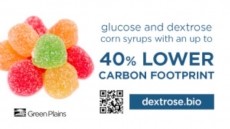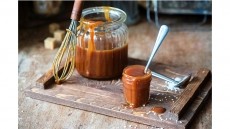Sugar beet pectin outperforms gum arabic: study
could see it substitute for gum arabic in emulsions, according to
new results from Wales.
Interest in pectin from sugar beet is increasing, and emulsions made with the ingredient were more stable than emulsions made with gum arabic, suggest findings published in the Journal of Agricultural and Food Chemistry .
"As compared to [emulsions] made with gum arabic, the emulsion samples made with sugar beet pectin samples exhibited similar (or even slightly higher) stability," wrote Chee Kiong Siew and Peter Williams from the Centre for Water-Soluble Polymers, North East Wales Institute.
Pectin, with worldwide production estimated at 35,000 tonnes a year, is currently widely used as gelling agents in jams, confectionery, and bakery fillings, and stabilisers in yoghurts and milk drinks.
The majority of pectin used currently comes from citrus peel and apple pomace.
The functionality of pectin is dictated by the chemical fine structure, and other sources of the ingredient, like sugar beet and pumpkin, have remained largely unexploited because of certain undesirable structural properties.
Study details Siew and Williams tested the stability of limonene oil-in-water emulsions stabilised by sugar beet pectin or gum arabic.
Size of the droplets of oil in the emulsion was determined by the concentration of pectin used, they report, with a decrease from 15 micrometres to about six as the concentration increased from 0.05 to two per cent pectin.
At a concentration of two per cent the researchers noted that this was the optimal to cover the surface of the oil droplet and stabilise it in the emulsion.
When compared to gum arabic-stabilised emulsions, a slighter higher droplet size was observed, which increased more over time compared to the sugar beet pectin-stabilised emulsions.
The chemical fine structure of sugar beet pectin was credited with the increase in stability.
Indeed, the adsorbed fractions of the pectin sample were rich in protein and ferulic acid, said Siew and Williams.
"The results suggest that one or both of these two functional groups adsorb onto the surface of the oil droplets and stabilise the emulsions," they wrote.
"High molecular mass fractions adsorbed preferentially onto oil droplets during emulsification," they added.
Gum arabic replacement The supply of gum arabic (E414 in the EU), also known as acacia gum because it comes from Acacia trees in the gum belt of Africa, is variable due to political and climatic factors in the primary producing countries like Sudan and Nigeria and this has led to spikes in the price of the ingredient.
Gum arabic, known as the Rolls Royce' of gums, is widely used by the food and beverage industry, and the top producers (mainly Sudan) bring about 50,000 tonnes of the gum to the market each year.
Attempts to find an alternative have lead researchers to study alternatives that could be used as a thickener, adhesive, and stabiliser for food and beverage applications.
The cost of sugar beet pectin must also be taken into account, with reports indicating it is more expensive than gum arabic.
Source: Journal of Agricultural and Food Chemistry Volume 56, Number 11, Pages 4164-4171 "Role of Protein and Ferulic Acid in the Emulsification Properties of Sugar Beet Pectin" Authors: C.K. Siew and P.A. Williams

















